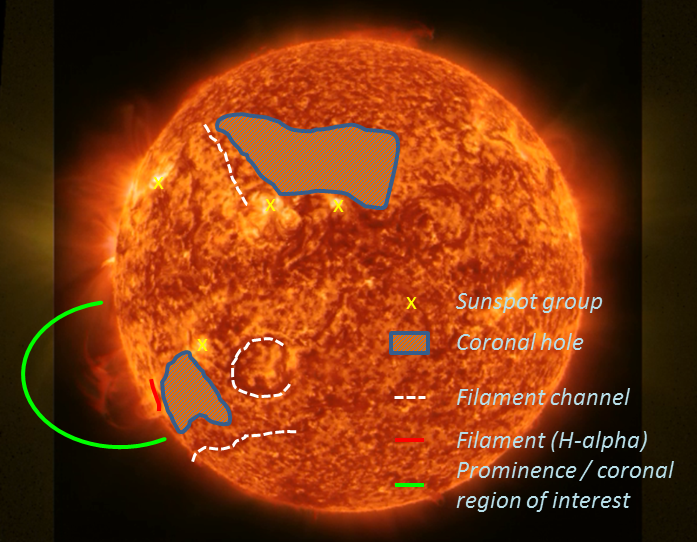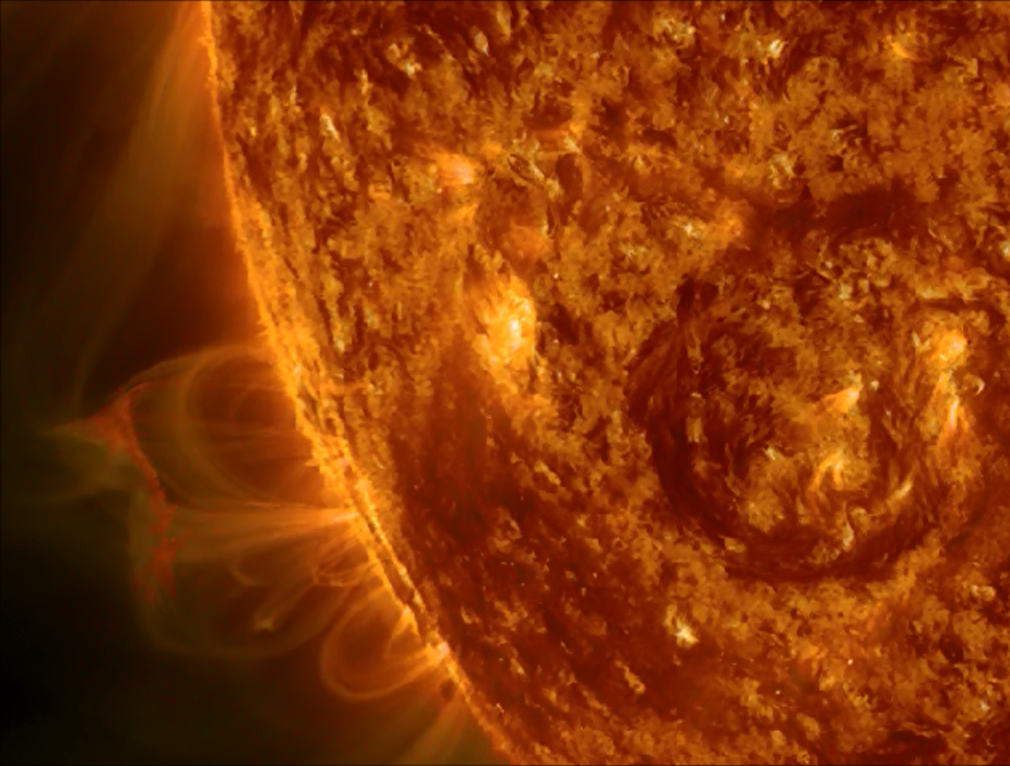An interesting region in the solar corona appeared over the southeast solar limb starting 1 February.
This movie, running from 1 till 4 February, starts by showing an overview of the solar corona (SDO/AIA171). Then follows a clip combining SDO/AIA304 and wide-field PROBA2/SWAP174 imagery of the whole Sun, thus providing a simultaneous view of the relatively cool plasma of prominences and the solar transition region ("reddish") and the much hotter plasma in the corona ("yellow"). The movie ends with a zoom on the region of interest.

Image above is taken from the SDO/PROBA2 combo clip, and sketches the situation on the Sun as viewed in the afternoon of 2 February. There are 2 coronal holes present, one on each hemisphere. They are accompanied by one or more filament channels (white dashed). In the chromosphere (H-alpha), these channels are not very clearly visible, but in the somewhat hotter transition region they can be seen well. The northern channel and the C-shaped channel are the scars of filament eruptions from 31 January. The filament to the south of the southern coronal hole erupted on 3-4 February (overnight), though also in this case hardly any material could be seen in the chromosphere.
The region of interest is indicated in green on the sketch, and concerns a complex coronal structure. This region is not associated to sunspot groups, with only facular fields visible in white light. As it rounds the east limb, it seems to interact with filaments to the east of the southern coronal hole, and with active regions on the northern hemisphere. This multipolar coronal structure reminds somewhat of the pillars and arches in a cathedral, though obviously not as symmetric and much more dynamical!
The last clip combines AIA304 (cool, "reddish") with AIA171 (hot, "yellow") imagery. By analyzing these images in their respective wavelengths, STCE-scientists found that some of the structures in AIA304 correspond to nearly similar structures in AIA171. This means that even in one wavelength like e.g. 17.1 nm, some cooler (0.5 million degrees and maybe even less) material is overlapping with hotter (1 million degrees) loops, creating an even more complex architecture.

 |
 |





